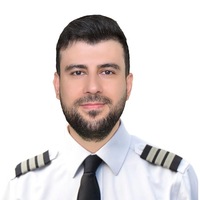matt yalcin
Embry-Riddle Aeronautical University, College Of Aviation, Department Member
Airplanes come in a variety of shapes and sizes, but they all share the same basic components, which make them work. But what are all of these components, and what do they do? In this lesson we are going to explain some aviation terms,... more
Airplanes come in a variety of shapes and sizes, but they all share the same basic components, which make them work. But what are all of these components, and what do they do? In this lesson we are going to explain some aviation terms, discuss the construction of different types of airplanes, and explain how various systems in an airplane work. It is important to understand why airplanes are designed the way they are and how their systems function. That way, if a system malfunction occurs, you can potentially troubleshoot and/or fix the problem. This lesson will cover: • The parts of an airplane • The flight controls • The powerplant and propeller • The landing gear • The fuel, oil, and hydraulic systems • The electrical system • And finally, the environmental system The Parts of an Airplane Airplanes are made up of hundreds, even thousands of parts, from the simplest pieces of wood and fabric, to newly-‐ designed composite airframes, to the most sophisticated of electrical components. Planes come in all shapes and sizes, but they all share the same basic design components. The basic components of any airplane are the fuselage, the wings, the empennage, the landing gear, and the powerplant. The fuselage houses the cabin and cockpit to hold the pilots, passengers, and cargo. The fuselage is considered to be the central component of the airplane, since all the other components are attached to it. Most airplanes manufactured today use something called semi-‐monocoque construction. This means that underneath the skin of the airplane there are a series of bulkheads and other supports that help hold the airplane together. As we'll be discussing in lesson 3, Aerodynamics, the wings of an aircraft generate lift as air flows around them. The wings are shaped to maximize the amount of lift they produce. The wings can be attached at the top, mid-‐way, or at the bottom of the fuselage. Most planes have a single set of wings, referred to as a monoplane; but some planes have two or three sets of wings, referred to as biplanes and tri-‐planes, respectively. The empennage, derived from a French word having to do with " feathering an arrow, " is commonly referred to as the tail section of the aircraft. It consists of two important surfaces: the horizontal and vertical stabilizers. These stabilizers are surfaces on the tail that keep the airplane under control while flying through the air. Beneath the fuselage sits the landing gear, also known as the undercarriage. This structure is used to support the aircraft while on the ground. There are generally two different types of configurations: tricycle and conventional gear. Tricycle gear is so named because its wheel configuration resembles that of a child's tricycle – that is, it has one lead wheel near
